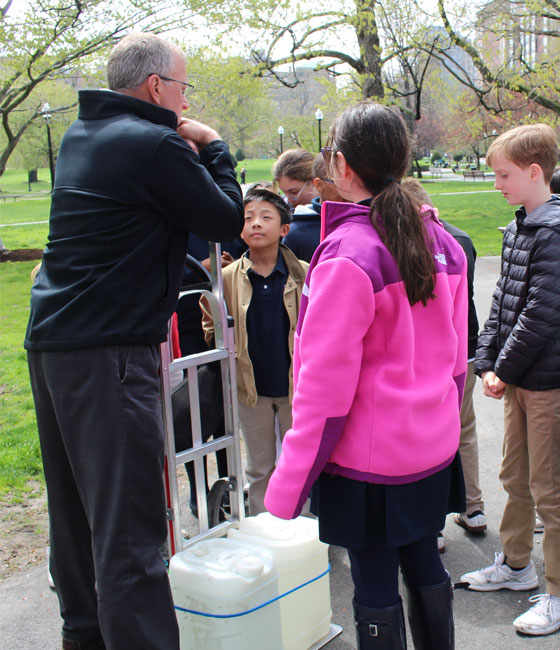
S.T.E.M? S.T.E.A.M? S.T.R.E.A.M.?
How about Design Learning?
Design Learning, inspired by Stanford University’s Design Thinking approach, is a solution-based method to solving problems that focuses on developing empathy for the people for whom products or services are being designed. The process of Design Learning entails understanding one’s users, defining their needs and problems, creating ideas for innovative solutions, building a solution prototype, and testing and honing the prototype. The stages of Design Learning are often a parallel process, instead of a sequential, step-by-step process. Grades 5 and 6 students participate in more formal Design Learning classes, and all Park Street School students see Design Learning incorporated into units, projects, or challenges.
As part of our Integrated Learning approach, technology and S.T.E.M activities are often folded into classroom activity. Our students can regularly be found actively working in pairs or teams to design and build. The variety of media they use in their activities is extensive. It ranges from simple items such as cardboard boxes, masking tape, Styrofoam balls, and straws to robotics and LEGOs.
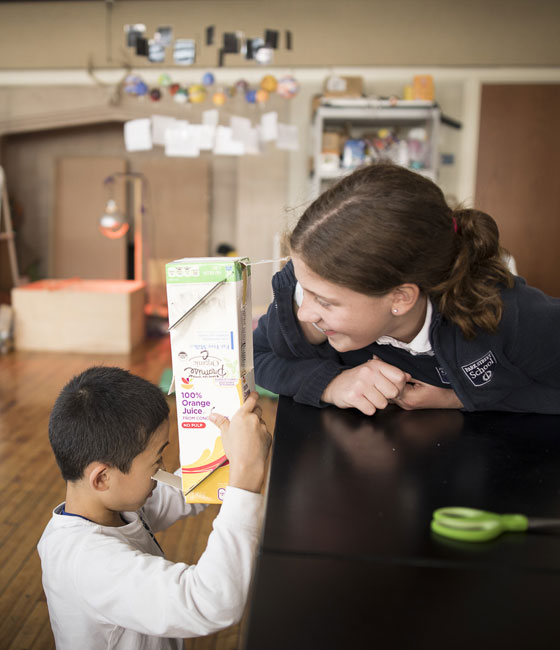
We Design, Build, and Collaborate!
We Build a Base of Knowledge
Perseverance produces the desire to grow in knowledge and understanding. During the Junior LEGO League Challenge in second grade, students learn about a current real world issue — whether it be the diminishing bee population, the value of recycling water, or performing research on the moon. Students first explore their topic by doing research, then question best practices, and finally move toward a physical solution. Students hear from current experts or professionals in the field (often our own parents!), and then build LEGO cars, trucks, or buildings from the ground up, incorporating gears programmed by an iPad. Students test and retest independently, encouraged by supportive teachers.
Through that struggle (the Design Learning process), students learn to embrace problems, seeing them not as obstacles, but as teaching tools on the path to knowledge, growth, and triumph in understanding. Finally, students present their LEGO designs to parents, peers, and teachers, and have a lot to say about what they’ve learned!

We Learn in Unexpected Ways
Sam Adams, Paul Revere, and John Adams are iconic names to Boston’s children, but imagine creating an iMovie to give a first-person account of that midnight ride to Lexington! What is familiar takes on new life and, as Design Learning is applied, students engage with history using contemporary tools. Fourth graders are tasked with researching a Bostonian who participated in the Revolutionary War. Students prepare research, reading books and gathering photos. With information in hand, students are then taught to use iMovie on iPads. Given the choice of perspective to tell their person’s story — biographical or autobiographical — suddenly storytelling fuses research to the use of voice and camera angles. Drawing digital photos and creating voiceovers enhance their scripts. Finally, while presenting their projects to classmates, they receive valuable feedback regarding how to improve their presentation by perhaps highlighting facts more effectively or improving image quality, sound levels, or timing.
Using new technology and different mediums to tell stories awakens students’ curiosity and ignites critical thinking skills. Be prepared — you might soon see a trailer of Paul Revere’s story told from the rider’s seat on a galloping horse.

We Find Our Voice and Learn How to Use It as We Collaborate
Building chariot wheels and aqueducts in third grade is an exciting way to learn about Rome. As a collaborative process, students develop confidence and find their unique voices. Beginning the process, they divide into teams, students research about the arena, Circus Maximus. They decide what facts to include in their final presentation, and write or type up their research. Then, they work on the wheels. Using math skills, they measure the circumference and perimeter needed for the wheels. They learn about tension and compression, and for the aqueduct, how arches and domes work. As teams, they decide what materials to use, and build the wheels with spokes, and the aqueducts. Incorporating art, they mix paint, struggling together to figure out what to do when paint does not adhere, and try again. Finally, the aqueduct, and the chariot with its wheels are built.
Collaborating with the gym teacher to figure out how to race the chariot, students tie ropes to the axis to pull the charioteer around the room. Each student brings a unique perspective to a project, and as each one learns how to find his or her voice, it benefits all.
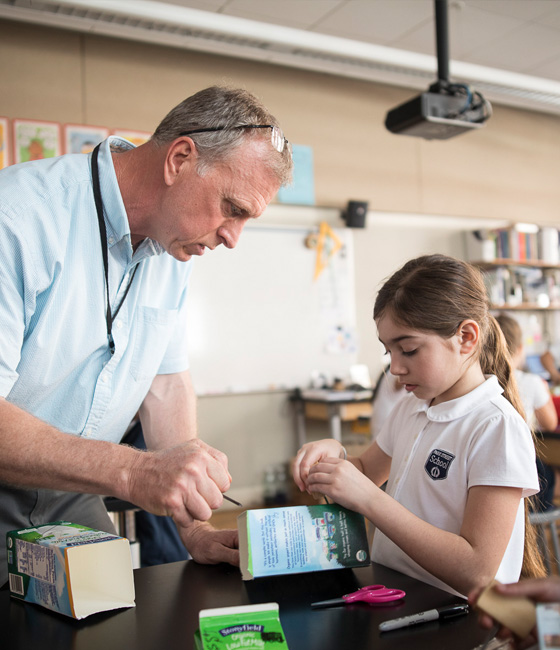
We Teach and Learn as We Interact with Other Grades
Listening and sharing ideas are two skills all of our students learn as they interact with one another. As “Buddies,” sixth graders are paired with younger students for a specific teaching/learning opportunity. Grade 6 students are asked to pick a topic to teach to their buddies. They begin by first listening to and interviewing the younger students and their teachers to better understand how they learn. The goal for the sixth graders? To learn their material so thoroughly that they can — using the Design Learning process — teach what they’ve learned to others. Choosing the topic of the ocean, sixth graders narrow their content to symbiosis, inter-tidal zones, coral reefs, and ocean animals. Based on their research, teams of sixth graders select what they conclude are the best methods to teach the 5- and 6-year-olds. They design prototypes of games, fun activities, and visual aids. Then, they present to their buddies! Listening, learning, testing, sharing, and starting over challenges the middle school students. They grow as they learn to teach others.
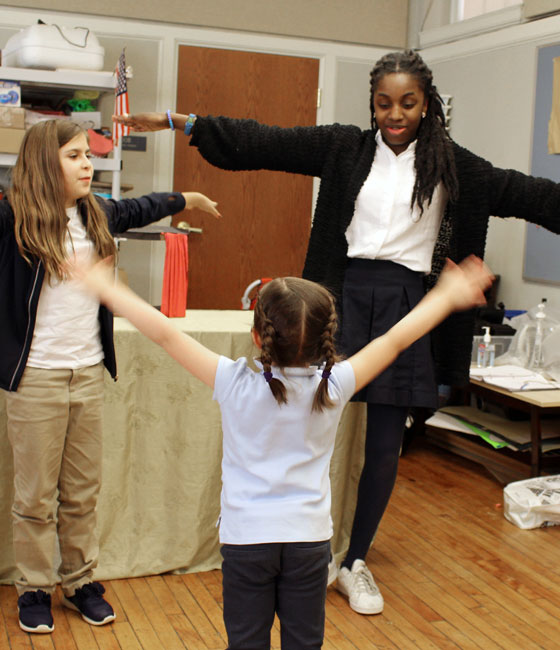
We Build Character and Tenacity
Working together in teams of two or five can present challenges for anyone, even our Pre-Kindergarten students or first graders. By working together and collaborating, our students discover that each one has valuable ideas. Our students learn how to work with one another as they incorporate those good ideas into projects. Several times a week, whether in a Pre-K classroom, or in first grade, students have the opportunity to build, draw, create, and collaborate in S.T.E.A.M. centers. They build bridges with tape and blocks, or use “I Can Draw” books. They design buildings with Citiblocs or Magatiles, or paint with watercolors. As teams, students see how tall and how strong structures can get, or figure out how much weight an upturned single plastic cup can carry. Students discover that starting over is okay, and testing and retesting builds tenacity and expands knowledge. Our students grow, not only in creativity or critical thinking skills, but in character.
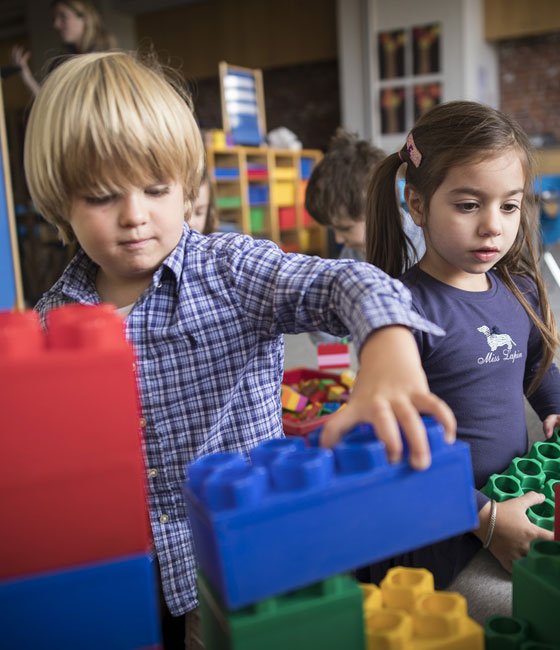
With a Solution-Based Approach, We Build Empathy
Awareness and seeking solutions to challenges grows our empathy. In fifth grade, students discover how scarce water is in South Sudan. After reading “A Long Walk to Water” by Linda Sue Park, they choose to support “Water for South Sudan” as their service project. Simultaneously in Science, they become increasingly aware of global water resources. Students receive two assignments: 1. to drink only water for two weeks (and donate money they would have spent on drinks to the service project), 2. to track their families’ water consumption at home. Students begin to appreciate environmental issues of conservation and pollution through real-life application.
In their final class for the unit, students struggle to move 40 lbs. of water around the Public Garden, growing an appreciation of Sudanese families’ daily experience of collecting water from miles away, and realizing just how valuable water is.
